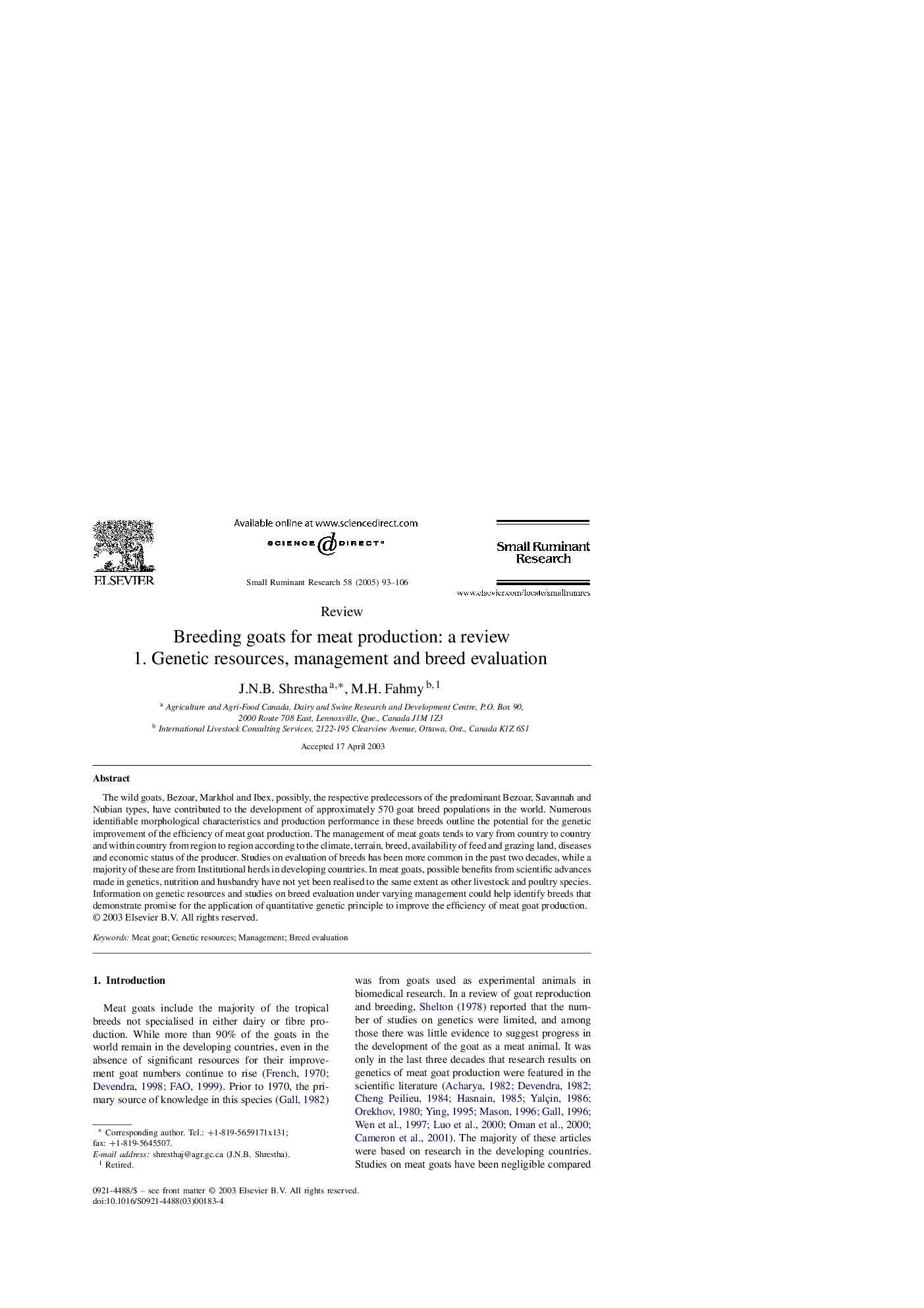| Article ID | Journal | Published Year | Pages | File Type |
|---|---|---|---|---|
| 8986680 | Small Ruminant Research | 2005 | 14 Pages |
Abstract
The wild goats, Bezoar, Markhol and Ibex, possibly, the respective predecessors of the predominant Bezoar, Savannah and Nubian types, have contributed to the development of approximately 570 goat breed populations in the world. Numerous identifiable morphological characteristics and production performance in these breeds outline the potential for the genetic improvement of the efficiency of meat goat production. The management of meat goats tends to vary from country to country and within country from region to region according to the climate, terrain, breed, availability of feed and grazing land, diseases and economic status of the producer. Studies on evaluation of breeds has been more common in the past two decades, while a majority of these are from Institutional herds in developing countries. In meat goats, possible benefits from scientific advances made in genetics, nutrition and husbandry have not yet been realised to the same extent as other livestock and poultry species. Information on genetic resources and studies on breed evaluation under varying management could help identify breeds that demonstrate promise for the application of quantitative genetic principle to improve the efficiency of meat goat production.
Keywords
Related Topics
Life Sciences
Agricultural and Biological Sciences
Animal Science and Zoology
Authors
J.N.B. Shrestha, M.H. Fahmy,
